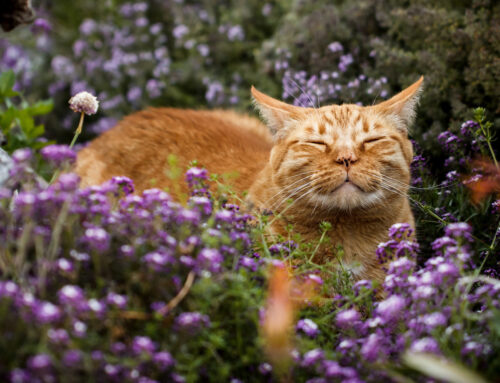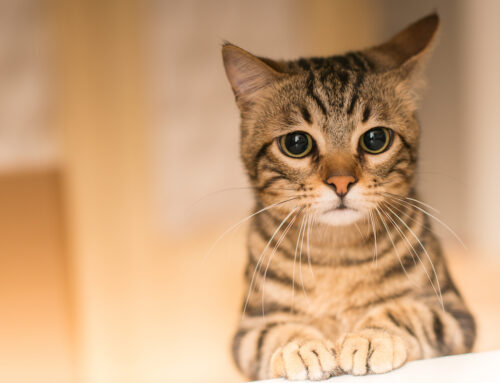When your cat hacks up a slimy fur sausage of a hairball, you may be disgusted or annoyed (especially if you’re barefoot or a favorite rug is involved). You may also wonder whether that’s normal.
As a cat parent, you have probably experienced your cat having hairballs occasionally. Cats will typically vomit a long, tubular mass of hair when coughing up a hairball. This can be distressing for both you and your cat.
An occasional regurgitated wad of hair isn’t cause for alarm, but frequent hairballs might mean your cat has an underlying health problem, such as anxiety, allergies, or an imbalanced gut microbiome (the community of bacteria in the digestive tract).
Let’s learn more about hairballs and when you should worry.
Why Grooming Is Important for Cats
Grooming is how cats stay clean, but it’s also soothing. Because of the hook-shaped protrusions (papillae) on their tongues, they end up swallowing a lot of the loose hair they lick out of their coats. Cats may also react with aggressive licking when a part of their body is in pain. So if you think your cat is grooming too much or too vigorously, check in with your veterinarian.
Hair is made of keratin, a protein mammals can’t digest, so most of the fur cats swallow is passed along, unprocessed, and eliminated with the stool.
Some of the hair will pass through their digestive tract and into their feces with no complications. In some cats, the hair will collect in their stomach and develop into a hairball. After the hair has accumulated in the stomach and a hairball is formed, it will then be vomited as a long, tubular hair mass that may be covered in slimy mucus.
Hairballs happen either because the ingested hair can’t move easily through the cat’s digestive tract or because the cat is taking in too much hair for the digestive system to handle.
What Causes Excessive Hairballs
Some say a healthy cat might vomit up a wad of fur every week or two. But all the feline experts agree that excessive production of hairballs can point to an underlying health problem.
Making sure your cat is active and playful can help reduce hairballs. Exercise aids his general health, which may help his system work a little smoother, too. But, a sedentary cat can experience decreased intestinal motility.
Short-chain fatty acids, which help regulate intestinal motility, are produced when beneficial bacteria in the gut ferment into complex carbohydrates. When a cat’s gut bacteria populations are out of proportion or key beneficial bacteria are missing, we describe the gut microbiome as imbalanced.
An imbalanced gut microbiome is one of the factors that can lead to inflammatory bowel disease (IBD), and chronic inflammation of the digestive tract which can severely disrupt motility.
Reduced motility means that food and moisture don’t progress through the intestines the way they should, and digestion suffers. But another important aspect of proper motility is that it limits the amount of time that pathogens and antigens are in contact with the intestinal walls. When these substances aren’t properly cleared away from the lining of the gut, the resulting bacterial overgrowth can interfere with the body’s absorption of nutrients.
When to See Your Vet
Coughing is sometimes misinterpreted as hairball-related hacking. Coughing may indicate asthma or other respiratory issues, so it’s important to consult your veterinarian if your cat has a cough.
Increased retching without the production of a hairball could indicate some bad issues in the GI tract like a blockage. This should be cause to bring your cat to the vet right away.
Preventing Hairballs
Feeding multiple small meals rather than one or two big meals per day can help prevent hair from building up in the GI tract. Don’t give your cat any sort of laxative without first consulting your veterinarian.
There are also a variety of hairball lubricants on the market that can help prevent these entanglements. Ask your family veterinarian for a recommendation. Now that you know how you can protect your cat from hairballs, you can snuggle your cat a little closer and know that hairballs don’t need to become a serious health issue for you and your cat.
Speak to a Professional Today
Are you looking for a new veterinarian? Are you new to the area here in Smyrna, Georgia? We will be happy to meet you and your cat. Click here to contact us and schedule an appointment with our staff today.






